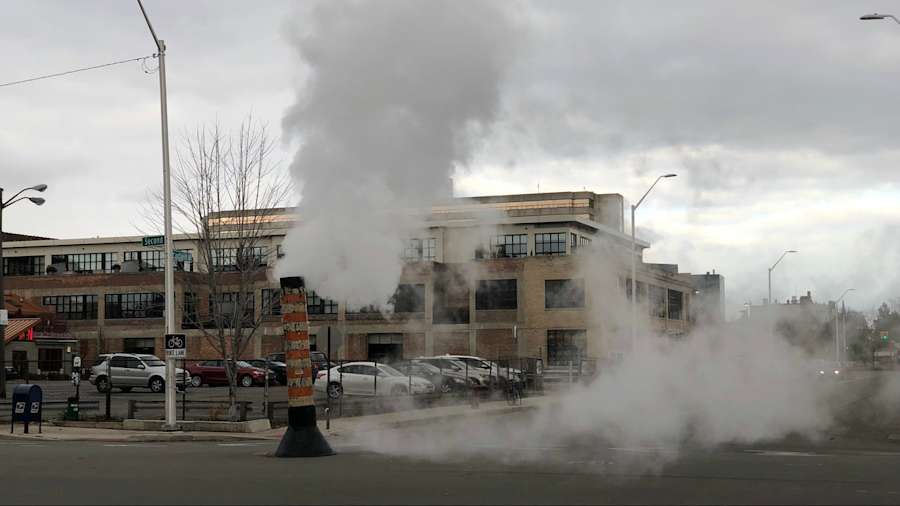Why are Detroit's sewers so steamy and is it dangerous to drivers or pedestrians?

Recommended Videos
Morning Musings 🤔
Today is a very important day in history. On Sept. 26, 1969, "The Brady Bunch" premiered.
"Here's the story, of a lovely lady, who was living with three very lovely girls." Now that the theme song is sufficiently stuck in your head for the rest of the day, here are some fun facts about the iconic show.
- The Brady family had a cat named Fluffy, for all of one episode -- the pilot.
- The idea for the show came after creator Sherwood Schwartz read a filler story in the Los Angeles Times about the increase in marriages involving people who had children from previous marriages.
- Gene Hackman was considered as Mike Brady, but TV execs didn't like it.
- Despite its pop culture impact, the show never cracked the Top 30 shows with Nielsen ratings during its original run. The show's fan base exploded following syndication.
"That's the way we became the Brady Bunch."
- Ken
Morning Dive 🏊
If you've ever taken a walk or a drive through Downtown Detroit, you've likely noticed the steam pouring out of certain manholes. Maybe you've noticed the giant smoke stacks in certain roadways and intersections.
What's the deal with the steamy sewers?
Detroit Thermal operates a district energy network in the city, including almost 40 miles of underground steam pipes that provide service to many of Detroit's best known buildings, including the DMC and the Renaissance Center.
The steam provides cost-effective heating, hot water production, and absorption cooling services, and it supports additional manufacturing processes, according to Detroit Thermal.
The majority of the steam for the network is generated at Detroit Renewable Energy's waste-to-energy plant, which safely generates renewable energy in the form of electricity and steam by safely processing municipal solid waste.
Steam is entirely contained underground in the extensive network; however, water vapor is sometimes visible at the street level for two reasons. It most commonly occurs as a result of other water sources, such as groundwater, coming in contact with the steam pipes.
This is similar to putting water on a hot pan at home. Plumes can sometimes be visible due to failed steam traps or leaks in the network.
Is the steam dangerous?
Just this week, a lawsuit involving 20 people was filed against Detroit Thermal, Detroit Renewable Energy, and Project Mist, claiming they were burned by the steam.
One woman said steam from the manhole burned her son while at the Science Center in Downtown Detroit while he was walking across the street. A man said he was injured in a hit-and-run accident and landed on a manhole cover.
Last year, I asked Detroit Thermal is the steam is dangerous. Here's what they said:
"No more than household steam. Health and safety are top priorities for Detroit Renewable Energy and we have 24-hour crews monitoring the lines to ensure safe operations. While visible water vapor is often safe, steam can be hot to the touch, and we urge caution around any visible plumes."
There have also been several instances of manhole covers blowing around Downtown Detroit in recent years, but some of those were blamed on cable failures.
Chatter 🗣️
- It rained for so long in West Michigan, a new state record was set. A slew of storms that moved through Mason County in July helped set a new 24-hour rainfall record, topping 12.92 inches.
- So, the Tigers are bad. So bad, in fact, they're offering huge incentives to season ticket holders to renew for next year. Take a look at some of the offers.
Housekeeping 🧹
Hey, if you like this newsletter, let us know. We'd love your feedback. We also offer several other newsletters that probably cater to at least one of your interests -- unless you're only interested in soup. We don't have one for soup. Sorry.
- Ken Haddad (Have something to say or a topic idea? Contact me: Email | Twitter)
Let's Link 🔗
Be sure to check in with ClickOnDetroit throughout the day for the latest news, weather and traffic. We're always working to keep you updated on the stories that matter most to you. We also like to have some fun along the way.



